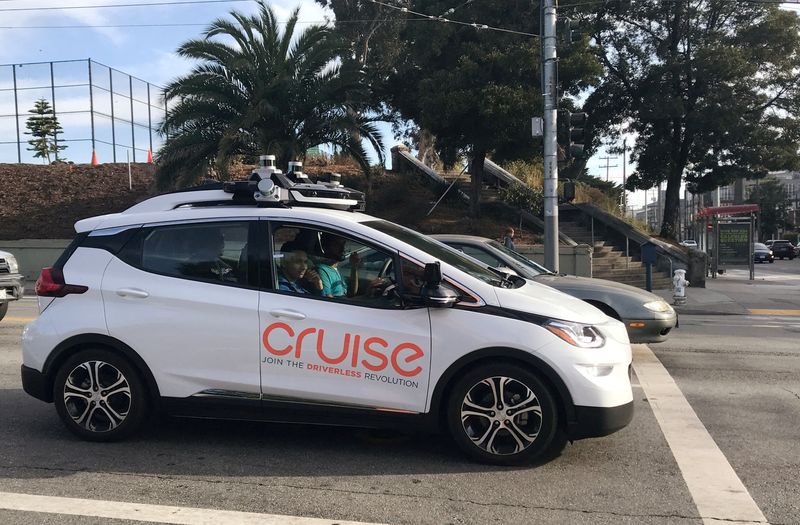By David Shepardson
(Reuters) -General Motors' self-driving vehicle business Cruise will slash 24% of its workforce as it works to restructure operations following an accident that forced it to halt U.S. testing, the company said on Thursday.
GM's money-losing robotaxi unit has been in turmoil for weeks. Cruise pulled all its U.S. vehicles from self-driving testing after California suspended its driverless testing permit following an October accident. The unit's CEO Kyle Vogt and co-founder Dan Kan both resigned last month.
The layoffs of 900 of its 3,800 employees are primarily in commercial operations and related corporate functions. Cruise said it had also ended work for some "contingent workers who support our driverless operations."
GM shares rose 5.4% on Thursday.
"This reflects our new future and a more deliberate go-to-market path, meaning less immediate need for field, commercial operations and corporate staffing," Cruise said of the job cuts.
On Oct. 2, a pedestrian hit by another vehicle was thrown into the path of a self-driving Cruise vehicle and dragged for 20 feet (6 metres). California suspended the testing permit and shortly after that Cruise halted all U.S. testing operations.
On Wednesday, Cruise fired nine executives, including its chief operating officer and chief legal and policy officer amid an external investigation led by law firm Quinn Emmanuel into the accident and Cruise's response.
GM said last month it would cut costs at Cruise, which lost more than $700 million in the third quarter and more than $8 billion since 2016.
“GM supports the difficult employment decisions made by Cruise as it reflects their more deliberate path forward, with safety as the north star," a GM spokesman said.
In November, Cruise said it would eventually re-launch in one unspecified city before expanding. Previously, Cruise had touted ambitious plans to expand to more cities, offering fully autonomous taxi rides.
The nascent driverless car industry depends on public trust and cooperation from regulators. In October, the California Department of Motor Vehicles ordered Cruise to remove its driverless cars from state roads, calling them a risk to the public and saying the company had misrepresented the safety of its technology. The same month, the National Highway Traffic Safety Administration (NHTSA) opened an investigation into pedestrian risks at Cruise.
Asked if Cruise is providing NHTSA with required information, Acting NHTSA Administrator Ann Carlson told Reuters the agency ensures automakers "are aware of our authorities and that they understand the circumstances if they don't comply."

Cruise could face $1.5 million in fines and additional sanctions over its failure to disclose details surrounding the accident, a California agency has said.
Mo Elshenawy took over as Cruise's president last month and told an all-hands meeting in December that the autonomous vehicle unit has hit an "all time low."